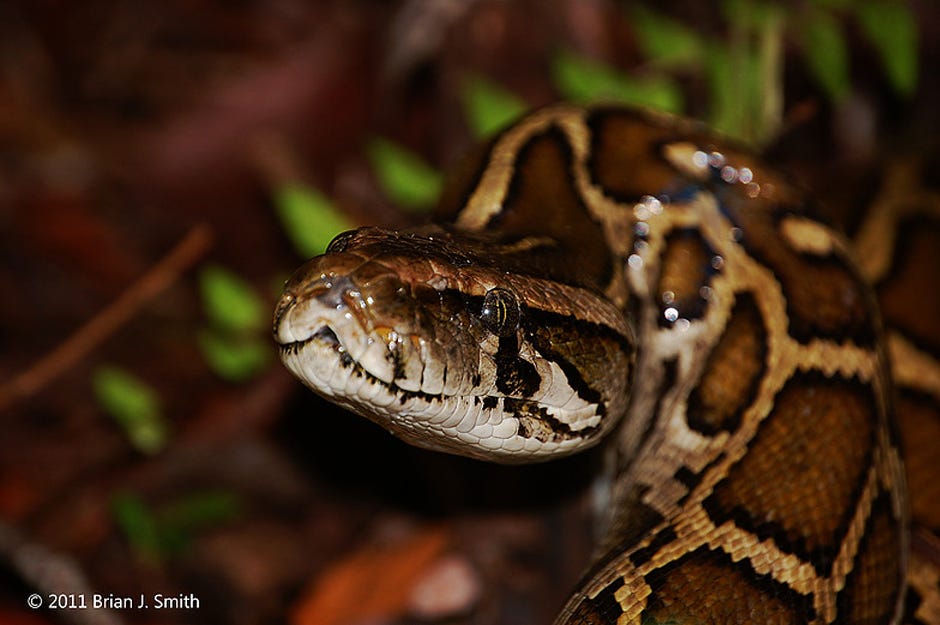
GAINESVILLE — When invasive Burmese pythons are breeding, radio-tracking one python can help find and capture more, a University of Florida Institute of Food and Agricultural Sciences researcher says.
Thus, UF/IFAS scientists say this technique can help them remove the pythons.
“This is one more tool we can add to our tool box to help us combat this invasive species,” said Brian Smith, a graduate student in the UF/IFAS wildlife ecology and conservation department and lead author of a new study documenting the radio-tagging experiment. “It is also complementary to our current removal tool, in which we drive on roads and levees to capture moving pythons. It’s complementary because it’s effective at a time of year when we do not catch pythons on the road, and also because it provides more opportunities to catch the really big, breeding females.”
For the new study, UF/IFAS and U.S. Geological Survey (USGS) researchers tracked 25 pythons from 2007 to 2012. Some of the pythons were used in more than one year, so their research covered 33 tracking periods. In those periods, researchers encountered eight of what they call “betrayal events.” At that point, scientists call them “Judas pythons” because they betray their own kind. Those “Judas pythons” led scientists to 14 new pythons, said Smith.
In all, scientists captured 14 new pythons during 33 tracking periods, said Smith, who conducts research under the supervision of assistant professor Christina Romagosa, a faculty member in wildlife ecology and conservation. Smith is also advised by professor Frank Mazzotti, a faculty member at the UF/IFAS Fort Lauderdale Research and Education Center.
While scientists have a complementary tool to remove Burmese pythons, the downside to the radio telemetry technique is that it costs $11,000 per python caught, compared to $6,500 per python caught while cruising around in trucks along Everglades roads. The upside is that snakes help them find Burmese pythons when road surveys aren’t effective.
“Using ‘Judas’ pythons might seem like a wild idea to some, but, despite the cost, it has been the best method to help us find more, large, reproductive individuals during the breeding season,” said Kristen Hart, a USGS research ecologist, study co-author, and a graduate advisor to Smith. “Removal of these large breeders is essential if we are ever to make a dent in the python population.”
Burmese pythons live a normally solitary life, but from December through April in southern Florida, they gather in groups of up to eight, providing an opportunity to spy on them, the study says.
Pythons arrived in South Florida via the pet trade. They then either escaped or were intentionally released into the wild, where they’ve been thriving since at least the mid-1990s.
The Burmese python, whose range stretches from Eastern Indian through mainland Southeast Asia, is a nonvenomous constrictor but can overpower a human. Pythons suffocate their prey before swallowing it.
The new study is published online in the journal Biological Invasions.
Brad Buck is a University of Florida Institute of Food and Agricultural Sciences science writer.
This article originally appeared on Crestview News Bulletin: University of Florida: Radio tracking helps hunt Burmese pythons
